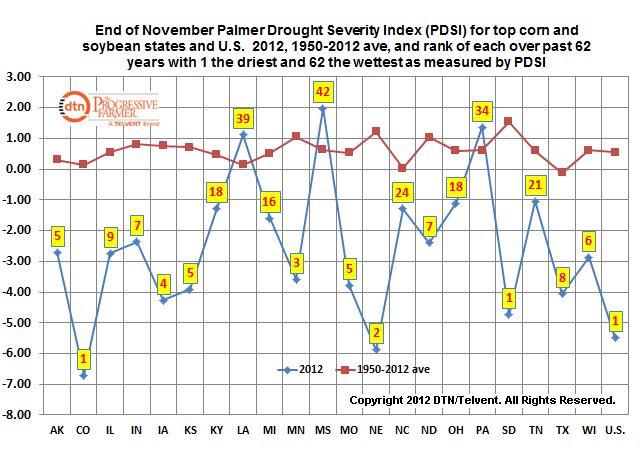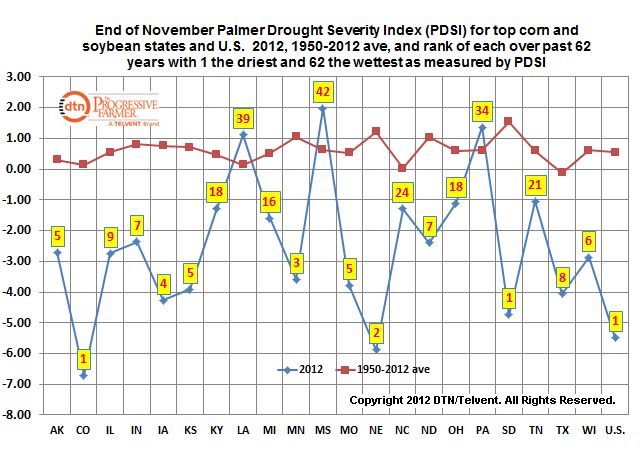Fundamentally Speaking
End of Nov Palmer Drought Ratings for U.S. & Top States
This past week it was reported that the U.S. Palmer Drought Severity Index (PDSI) fell to a new low of -5.48, indicating a very exceptional to extreme level of drought.
This comes after two straight months of improvement in September and October but conditions have really deteriorated in recent weeks in much of the Plains and Western Corn Belt.
This is the second worst ever national PDSI for the end November with only the -6.31 in 1934 lower.
Many climatologists are wondering if the 2012 mega-drought is part of a pattern of extended years of dryness that were experienced in much of the 1930’s and 1950’s.
P[L1] D[0x0] M[300x250] OOP[F] ADUNIT[] T[]
Note that the current end of November reading is actually lower than readings posted in 1954 or 1956, the most intense drought prior to this year’s event.
The accompanying chart shows the end of November PDSI ratings for the top corn and soybean states and the U.S. for 2012 and the 1950-2012 average.
Also plotted is the rank of each state and the U.S. in terms of the end of November PDSI from 1950-2012 with a ranking of 1 meaning it is the driest or has the worst PDSI while a ranking of 62 signifies that it is the wettest.
A look at this graphic easily conveys which states are in good condition as far as moisture is concerned and which are in the direst shape.
As mentioned earlier, as of November 2012, the U.S. has the lowest PDSI since 1950 and hence its number 1 ranking.
Also in that category are CO and SD. Other states with critically dry conditions include AK, IA, KS, MN, MO, and NE.
In fact 14 of the top 21 corn and soybean states have PDSI ratings in the lower 20% of values seen since 1950.
The Delta and Southeast states are doing comparably better while much of the Midwest and Plains suffer from severe drought.
The ramifications from this cannot be understated with the U.S. hard red winter wheat crop in its worst shape ever for this time of year while barge traffic is being severely impeded by very low water levels on the nation’s key rivers.
Looking ahead, unless some of these severe moisture deficiencies are cleared up by spring, this could have a major impact on corn yields which have been below trend three years in a row and plantings with talk of higher soybean seedings given that plant’s better ability to cope with dry soils.
(KA)
© Copyright 2012 DTN/The Progressive Farmer. All rights reserved.






Comments
To comment, please Log In or Join our Community .